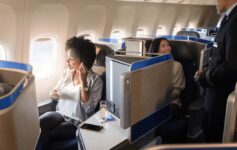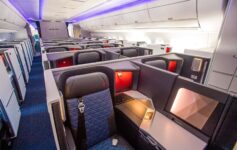
While headlines celebrate what appear to be cuts in partner premium cabin award pricing at United Airlines, a closer look reveals a more nuanced story: the savings apply to elites and co-brand cardholders rather than everyone. That’s still a positive move, but it’s not the universal drop others have reported, nor is it something new.
United Award Price Cuts, But Here’s Who Actually Gets Them
Recent coverage by Thrity Traveler and View From The Wing has highlighted that United Airlines reduced business class award rates on partner airlines. One-way transatlantic business class redemptions that previously started at 88,000 miles now show as low as 80,000 miles. Transpacific business class redemptions that were 99,000 now price at 90,000 miles. Across the board, awards are 9-10% off. On the surface, that sounds like a reversal of years of devaluations and a signal that United is finally trying to compete again. CEO Scott Kirby has repeatedly promised that very positive changes are coming to MileagePlus. Is this the start?
However, this narrative misses an important distinction: as far as I can tell, the lower prices do not appear to apply to everyone.
The Fine Print: Discounts For Some, Not All
Digging deeper, the discounts appear targeted to select MileagePlus members—specifically elites and holders of United-branded credit cards. Travelers without elite status or a co-branded card are still seeing the same pricing (for example, 88K instead of 80K for a one-way saver business class award to Europe). In other words, what was cast as a broad rollback is really a differentiated benefit layered into United’s elite and cardholder ecosystem.


Also, it’s not new…it has been like this for months.
United’s approach mirrors what Delta has been doing: offering preferential award pricing to Medallion members and Delta SkyMiles American Express cardholders. These are not systemwide drops, but personalized pricing models that reward loyalty and spending within the airline’s ecosystem.
Still A Win…
From a loyalty perspective, this is actually a smart strategy. By selectively lowering award rates for higher value customers, United gives elites and cardholders a tangible reason to stay engaged while avoiding a mass devaluation reversal that would affect its bottom line. As far as strategies go to keep MileagePlus members engaged, this is reasonable.
For MileagePlus members with a United credit card or status, this represents a meaningful improvement. For everyone else, the story is far less exciting. The “cuts” are better understood as tier-based discounts, not true price reductions across the board.
There’s even more naunce that I won’t get into today. First, United is restricting more premium cabin award space to its own elite members (XN for economy, IN for business class). Second, United is restricting partner access to its award space. Just becuase “X” or “I” is available on United when logged in, does not mean that the space can be booked with a partner like Singapore Airlines or Aegean Airways.

Finally, keep in mind United publishes no awards charts and while “saver” awards follow set pricing, United makes no guarantees that it will not change without notice.
CONCLUSION
So yes, United has lowered some award prices months ago, but not for everyone. What’s really happening is that the airline is extending targeted pricing benefits to those within its loyalty and co-brand ecosystem, much like Delta already does. That’s positive news for elites and cardholders, but casual flyers shouldn’t assume their next award ticket suddenly costs 9% less. This is selective generosity, not a wholesale rollback.




@Matthew are 90,000 mile award tickets to Asia ever actually available? It’s been years since I’ve seen anything like that.
Not in Business Class anymore. The good ole days are gone.
No, there are essentially zero 90K biz class awards across the Pacific. To/from Europe, pretty much only “mixed cabin” awards where you sit in coach for the long TATL leg.
Raise prices a lot, then provide a teeny, tiny loophole for just a few flights that are otherwise filled with annoyances and unpleasantness, and point to those as your great price reductions.
We live in The Age Of Bullshit. This article is Exhibit A.
Where arw the new premier qualification requirements to earn in 2026 for 2027 status?? It is the end of October . . .
IN availability is as rare as unicorns for transPacific.
On my recent LAX/MEL flight there were 26 seats open 72 hours before departure with no Saver availability, even to elites, and a “cost” that never went below 200K points.
That was 72 hours before. How many actually went open on the flight? I imagine very few. Why? Because the reality is they can upsell last minute upgrades quite easily on these flights. I’m not saying it justifies anything BUT it does show how they look at potential revenue. The potential of selling 26 upgrade offers at a hypothetical $1500 each is far better for UA in the end. I’m sure they are well versed in knowing which flights have the highest percentage of check-in upgrade takers for cash and as such just block saver all the way to departure. I fully admit I do the same on 14 hour flights like LAX-MEL. No way I will take the chance on those flights waiting for a plus points upgrade to clear or not. Because I know there are dozens willing to pay for it.
The reality is that upsells to premium cabins have killed elite upgrades, gutted saver redemptions, and reduced the overall value of these programs anymore. The only thing that will bring them back is far more competition OR a global recession (which is when it won’t matter to us as much).
Matthew, correct me if I’m wrong but wasn’t it 110K/100K for TPAC? That’s at least what I booked 2 months ago. Not 99/90?
For SFO/MNL I am seeing more IN availability (at 100k) compared to 3-6 months ago. I haven’t seen the extra 9-10% discount. I booked a seat 3 weeks ago.